Comprehensive Guide To Banteay Srei Temple: The Citadel Of Women
June 23, 2023
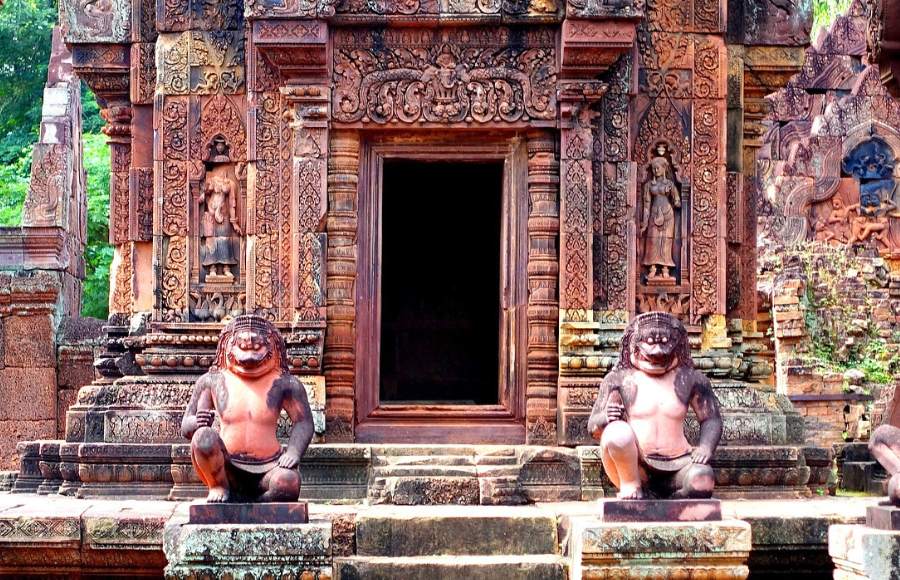
Table of Contents
Comprehensive Guide To Banteay Srei Temple: The Citadel Of Women
Exploring Banteay Srei Temple: A Feminine Twist on Cambodia’s Rich History
Discover the captivating beauty and rich history of Banteay Srei, Cambodia’s awe-inspiring “Citadel of Women.” Delve into the intricate carvings, stunning pink-hued architecture, and enchanting mythology surrounding this remarkable Hindu temple dedicated to Shiva.
In our comprehensive guide to Banteay Srei – the well-preserved art gallery of Angkor – you’ll uncover hidden gems that make it a must-visit for any history and art enthusiast.
Key Takeaways
- Banteay Srei Temple is a well – preserved Hindu temple in Cambodia, known for its intricate carvings and unique architecture featuring pink sandstone.
- The temple holds historical significance as one of the most impressive examples of ancient Khmer Empire artistry and craftsmanship.
- Visitors can explore the temple complex on a tour, admiring the main structures, detailed carvings, and stunning artwork while respecting the sacred nature of the site.
- To plan a visit to Banteay Srei Temple, travelers should consider purchasing tickets that also grant access to other Angkor monuments and nearby attractions. Transportation options include tuk-tuks, cars, bicycles, private tours or shared tours.Accommodation options are available near Banteay Srei Temple ranging from high-end hotels/resorts to budget-friendly guesthouses.
The Citadel Of Women: Banteay Srei Temple
Banteay Srei Temple is known as the “Citadel of Women” or the “Citadel of Beauty,” and it holds historical and cultural significance in Cambodia.
History And Significance
Banteay Srei Temple, nestled in the Angkor region of Cambodia, holds a significant place in history as one of the most well-preserved temples from the ancient Khmer Empire.
Interestingly, it was not constructed by monarchs but rather by two nobles who had a keen interest in Hindu texts.
The temple is dedicated to Shiva, one of the principal deities in Hinduism and is renowned for its intricate carvings which are often regarded as some of finest examples found throughout Cambodia.
Various elements contribute to Banteay Srei Temple’s prominence within Southeast Asian art and culture: stunning craftsmanship dating back over a millennium; fascinating historical significance imbued through every aspect; and utterly mesmerizing aesthetics that beckon tourists far and wide.
Unique Features And Architecture
Banteay Srei Temple is renowned for its unique architecture and intricate carvings, considered some of Cambodia’s finest examples. The temple features striking pink sandstone, giving it a distinct appearance compared to other temples in Angkor.
Banteay Srei Temple also includes several distinct structures, including four courtyards and three concentric enclosures. Its main tower, or prasat, stands 9 meters tall and features Hindu iconography and detailed carvings depicting ancient Hindu texts’ legends.
Mythology And Legends Surrounding The Temple
Banteay Srei Temple is steeped in mythology and folklore that has been passed down through generations. One of its most well-known legends involves the temple’s construction.
According to popular belief, Banteay Srei was built by women, which is why it is called the “Citadel of Women.” The story goes that after King Rajendravarman fell ill while leading a military campaign, his sister Princess Jayarajadevi took over as ruler and began overseeing the temple’s construction with a group of female artisans.
Another popular legend surrounding Banteay Srei suggests that the temple was home to a sacred relic known as Indra’s Three Pronged Thunderbolt. It was said that whoever possessed this artifact would become invincible in battle.
Despite these myths and legends, what we know for sure is that Banteay Srei Temple remains an artistic marvel of Hindu iconography dedicated to Shiva that sets itself apart from other Angkor temples due to its intricate carvings on pink sandstone walls depicting scenes from Hindu epics like Ramayana and Mahabharata.
Exploring Banteay Srei Temple
Embark on a tour of the temple complex, taking in the main structures and layout, while admiring the intricate carvings and impressive artwork that grace every surface.
Main Structures And Layout: A Tour Of The Temple Complex
Banteay Srei Temple is a small temple complex with intricate and impressive carvings. Here is a tour of the main structures and layout of the temple:
- The Outer Walls: The temple is surrounded by two outer walls, with the first wall having four gopuras or entry gates.
- The Third Gopura: This gate leads to the second enclosure area where visitors can find the central temple structure.
- Central Structure: The central structure consists of three towers dedicated to Shiva, Vishnu, and Brahma. Visitors can climb up to obtain stunning views of the surrounding area.
- Library: Adjacent to the central tower are two large libraries that contain inscriptions detailing ancient Khmer history.
- Devatas: There are 200 devatas (sacred goddesses) carved on the external walls of Banteay Srei Temple, each depicted in intricate detail.
Visitors should plan to spend at least a couple of hours exploring Banteay Srei Temple to appreciate its detailed architecture and impressive carvings.Beauty In The Details: Carvings And Artwork
The intricate carvings and artwork at Banteay Srei Temple are some of the most impressive in Cambodia. Visitors can spend hours marveling at the stunning details etched into the pink sandstone walls – from delicate flowers to fierce mythical beasts and intricate scenes from ancient Hindu mythology.
Unlike many other temples in Angkor, which feature mainly flat engravings, Banteay Srei’s carvings are three-dimensional, adding an extra layer of texture and depth to its beauty.
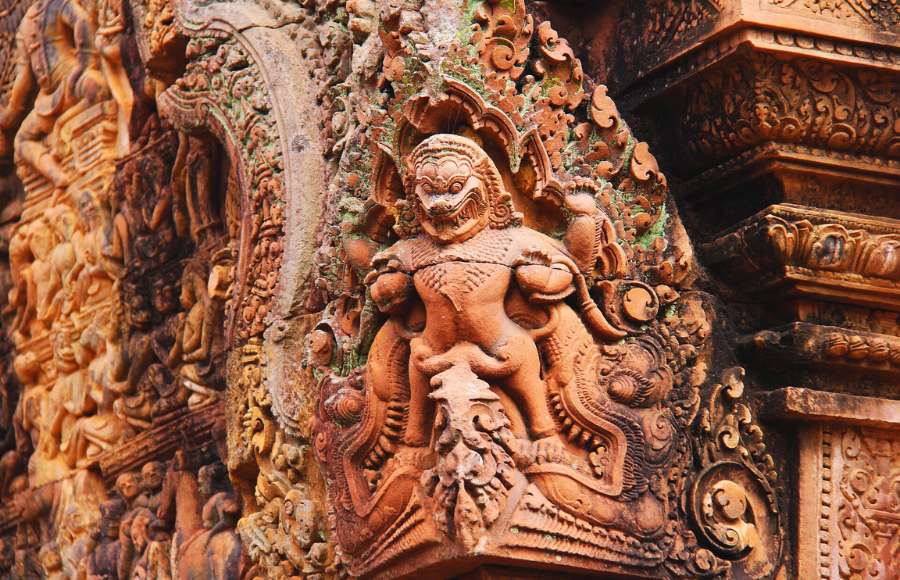
Tips For Visiting And Touring Banteay Srei Temple
When visiting Banteay Srei Temple, planning for the best experience is important. Here are some tips:
- Visit early in the morning or late in the afternoon to avoid crowds and heat.
- Wear comfortable shoes suitable for walking on uneven ground and climbing stairs.
- Bring sunscreen, a hat, and plenty of water to stay hydrated.
- Consider hiring a local guide or joining a tour group to learn more about the temple’s history and significance.
- Respect the sacred nature of the temple by dressing modestly and avoiding loud noises or disruptive behavior.
- Take time to appreciate the intricate carvings and artwork throughout the temple complex.
- Don’t touch or climb on any of the temple structures or carvings, as this can cause damage and is prohibited by conservation laws.
- Plan for extra time at Banteay Srei Temple, as exploring all of its unique features and beauty may take several hours.
Planning Your Visit To Banteay Srei Temple
To plan your visit to Banteay Srei, you will need to purchase a ticket, which includes access to the entire Angkor Archaeological Park.
Banteay Srei Temple Tickets And Opening Hours
Banteay Srei Temple offers a glimpse into the past through its breathtaking architecture and intricate carvings. When planning your visit, knowing the ticket options and opening hours is essential to make the most of your experience. The details of tickets and opening hours are as follows:
| Ticket Type | Price | Valid For |
|---|---|---|
| One-Day Pass | $37 | Single Day |
| Three-Day Pass | $62 | 10 Days |
| Seven-Day Pass | $72 | One Month |
Please note that these ticket prices also grant you access to other temples and monuments in the Angkor complex. Banteay Srei Temple is open daily from 7:30 AM to 5:30 PM, ensuring plenty of time to explore this magnificent historical site.
Getting There And Transportation Options
Getting to Banteay Srei Temple requires some planning as it is located outside of the main Angkor complex. Here are some transportation options for visiting the temple:
- Tuk-tuk: Tuk-tuks are a popular and convenient mode of transportation in Siem Reap. You can hire a tuk-tuk driver for the day to take you to Banteay Srei Temple and other nearby sites.
- Car rental: If you prefer to have more control over your transportation, you can rent a car in Siem Reap and drive yourself to the temple.
- Private tour: There are many private tour companies that offer guided tours of Banteay Srei Temple and other Angkor sites. This option provides a knowledgeable guide who can share insights into the temple’s history and significance.
- Shared tours: Sharing a tour with other visitors is another cost-effective way to visit Banteay Srei Temple with a guide.
- Bicycle: For those who enjoy cycling, renting a bicycle is an eco-friendly and adventurous way to explore the area surrounding Banteay Srei Temple. However, be aware that the roads leading up to the temple can be bumpy and dusty.
No matter which method of transportation you choose, be sure to plan in advance as Banteay Srei Temple is located about 30 kilometers from Siem Reap, and travel time can take up to an hour or more depending on traffic conditions.
Accommodation And Nearby Attractions
When planning your visit to Banteay Srei, it’s important to consider where you’ll be staying and what other attractions are nearby. Although the temple is located in a remote area, several accommodation options remain available for visitors.
For those who want a more luxurious experience, there are high-end hotels and resorts in Siem Reap, about 20 miles away from Banteay Srei Temple.
Aside from exploring Banteay Srei Temple itself, visitors can also check out some of the other nearby ruins and temples that make up the larger Angkor complex. Some highlights include Ta Prohm with its iconic tree roots wrapped around ancient structures and Bayon Temple’s fascinating face towers featuring over two dozen carvings of serene faces.
Overall, taking advantage of accommodation options near Banteay Srei Temple while exploring nearby attractions will ensure a memorable trip filled with history and authentic Cambodian experiences at every turn.
Experiencing Banteay Srei And The Surrounding Area
Experience the local Cambodian culture and traditions by exploring the nearby villages, markets, and farms.
Local Culture And Traditions
When visiting Banteay Srei Temple, it’s important to understand the local culture and traditions that surround this historical site. Cambodia is a country with a rich history and unique customs that have been passed down for generations.
Additionally, Cambodian people hold great respect for their elders, so visitors should be mindful of showing respect towards older locals when interacting with them. Traditional Khmer dress can also be seen around Banteay Srei, especially during religious ceremonies or festivals like Pchum Ben.
Exploring Nearby Temples And Ruins
While Banteay Srei Temple is already an impressive sight on its own, there are also other nearby temples and ruins that are definitely worth exploring. Some of these include:
- Banteay Samre – located just a few kilometers from Banteay Srei Temple, this temple features intricate carvings and a moat.
- Kbal Spean – also known as the “River of a Thousand Lingas”, this site features carvings of Hindu gods in the riverbed.
- Pre Rup – a temple with impressive views of the surrounding landscape, it was built in 961 AD during the reign of King Rajendravarman II.
- East Mebon – another temple from the reign of King Rajendravarman II, it is known for its elephant statues at each corner.
- Preah Khan – a large temple complex that was once home to more than 1000 teachers and students, it has since been largely consumed by jungle growth.
Exploring these nearby temples and ruins can give visitors a greater appreciation for the history and culture of Cambodia during the Khmer Empire period.Where To Stay And Eat Around Banteay Srei
When planning a visit to Banteay Srei, it’s important to consider where you’ll be staying and eating during your trip. While the temple itself is located in a remote area, there are still plenty of accommodation options nearby.
For those who prefer luxury stays, there are several high-end resorts just a short drive away from the temple, such as the Belmond La Residence d’Angkor or Amansara.
Those on a budget can opt for more affordable guesthouses or homestays in Siem Reap, which is about an hour’s drive away from the temple.
It’s worth noting that many visitors to Banteay Srei often combine their trip with visits to other nearby temples and ruins-like Angkor Wat-which means there are even more accommodation and restaurant choices available in the area.
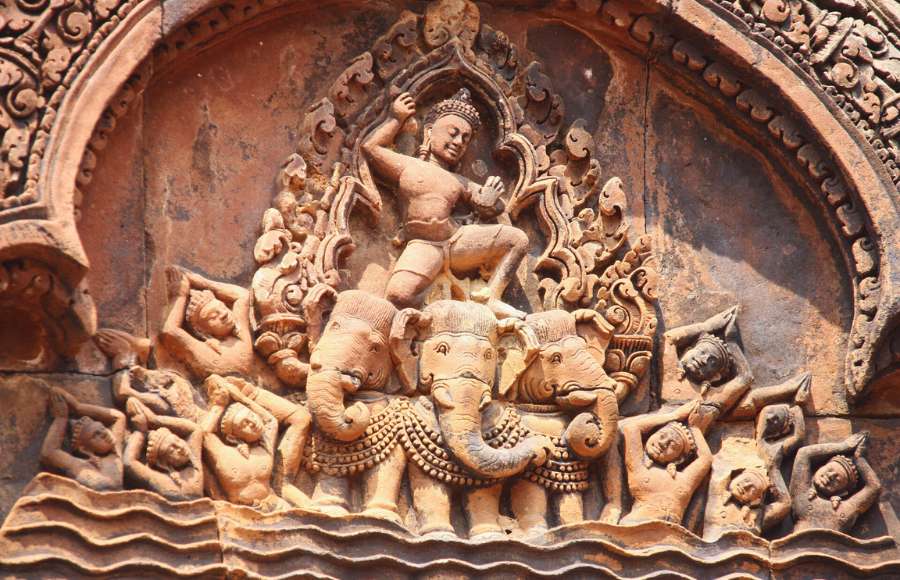
Why Banteay Srei Temple Is A Must-Visit For History And Art Enthusiasts.
Banteay Srei Temple, the Citadel of Women, is a stunning Hindu temple in Cambodia that captures the heart of history and art enthusiasts. From its intricate carvings to unique architecture, Banteay Srei takes you on a journey through time.
Whether you are interested in learning about ancient traditions or simply appreciating beauty in detail, Banteay Srei has something for everyone.
Banteay Srei Temple – FAQs
What is Banteay Srei Temple, and why is it called the Citadel of Women?
Banteay Srei Temple is a 10th-century Hindu temple located in Cambodia. It is called the Citadel of Women due to its intricate carvings that are said to be so delicate they could only have been made by women.
Are there any unique features or must-see attractions at Banteay Srei Temple?
Yes, some of the must-see attractions at Banteay Srei Temple include its pink sandstone walls with intricately detailed carvings that tell stories from Hindu mythology. Additionally, visitors should check out the three main towers, each holding a statue of a different Hindu god.
How long does it take to explore Banteay Srei Temple?
Visitors should plan to spend at least an hour exploring the temple to see all major structures and fully appreciate their intricate details.
Is there anything visitors need to know before visiting Banteay Srei Temple?
Yes, visitors should dress modestly when visiting this sacred site and avoid wearing clothing that shows shoulders or knees out of respect for local customs and traditions. Visitors should also bring sunscreen, water bottles, hats and bug spray as temperatures can get high during parts of the day while mosquitos can be very active around dusk & dawn times especially near bodies water such as ponds adjacent areas where vegetation grows denser than usual due frequent rains common during monsoon season in this area’s climate zone.
Recent Post
Get 30% Discount Now
Categories
Guided Tours
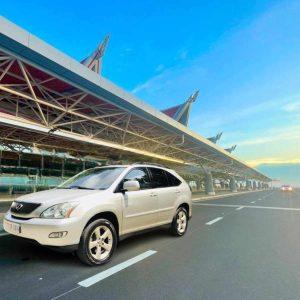
Private Siem Reap Airport SAI Transfers – Siem Reap Airport Pick-up or Drop-off, Just for You!
From: 30$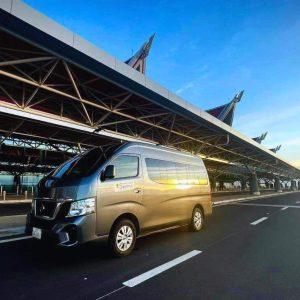
Shared SAI Siem Reap Airport Transfer – We depart every 1 hour!
From: 9$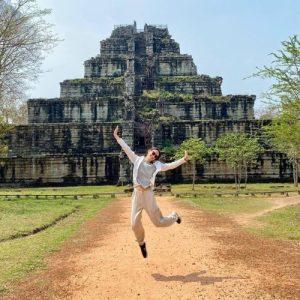
Private Full-Day Siem Reap to Koh Ker & Beng Mealea Temple Tour
From: 75$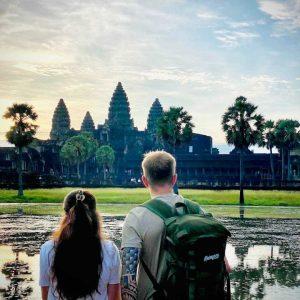
2-Day Angkor Wat Sunrise & Banteay Srei Grand Tour – Small Group Tours
From: 30$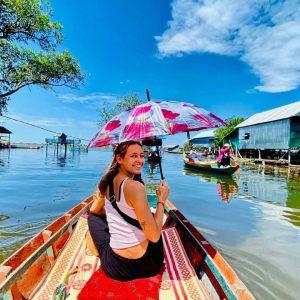
2-Day Angkor Wat Temple Sunset and Floating Village Tour
From: 40$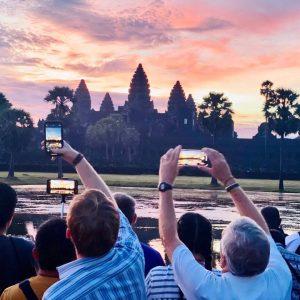
3-Day Angkor Wat Sunrise, Banteay Srei and Floating Villages Tour – Small Group Tours
From: 50$